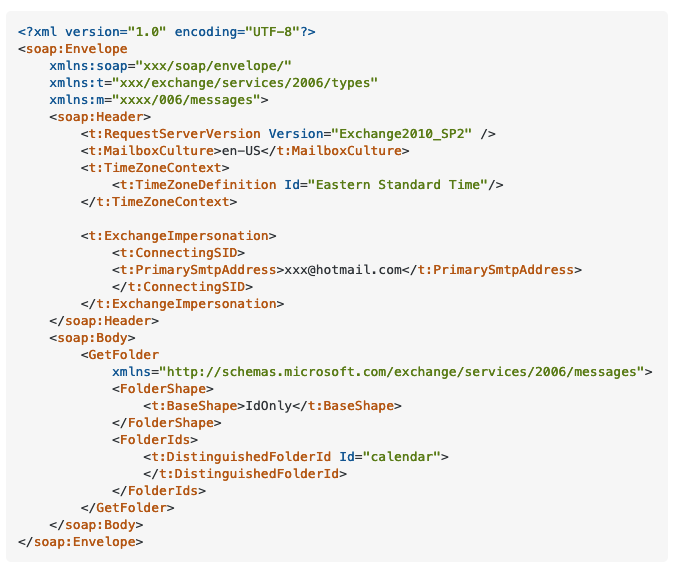According to the OAuth 2.0 specification, the authorization code expires shortly after it is issued, with a maximum authorization code lifetime of 10 minutes (could potentially be shorter). If you are making your requests immediately after receiving your authorization code, you can eliminate this error as a possibility.
Forbidden error for Exchange Web Service request with Authorization Code Flow
Maxou Mcfly
1
Reputation point
The Exchange Web Service requests to https://outlook.office365.com/EWS/Exchange.asmx with the access token received by the OAuth 2.0 Authorization Code Flow results to a status code 403 Forbidden.
Steps:
- Opening and authorizing the application with
https://login.microsoftonline.com/common/oauth2/v2.0/authorizeand the parameters:
-
client_id:5fafd813-xxx -
response_type:<redirect uri specified in azure> -
respone_mode: query-scope:openid offline_access email https://outlook.office.com/Calendars.ReadWrite https://outlook.office.com/EWS.AccessAsUser.All\`
After authorization with my personal account, this redirects to the specified redirect uri with a code.
- Generate a token via
https://login.microsoftonline.com/common/oauth2/v2.0/tokenwith the parameters:-
client_id:5fafd813-xxx -
response_type:<redirect uri specified in azure> -
respone_mode:query -
scope:openid offline_access email <outlook url>/Calendars.ReadWrite <outlook url>/EWS.AccessAsUser.All -
client_secret:6Mp8Q\~4...RD -
code:<code from the previous step>This generates an access token and refresh token
-
- Getting the Calendar Folder Id with a SOAP request by passing the received access token in
Authorization: Bearer <access token>:
Unfortunately this results to
403 Forbidden
Is the scope of the authorization incorrect ? Is the SOAP request incorrect ?
Notes:
- I tested the SOAP request without impersonation that changed nothing
- I tested the SOAP request with the Client credentials flow and a private account
onmicrosoftthat worked correctly
2 answers
Sort by: Most helpful
-
-
Bart Brackenier 0 Reputation points
2024-08-14T08:31:23.2633333+00:00 Any update on this, i have same issue, although i have a valid token and logged in succesfully.
